In order to relieve the pain caused by piriformis syndrome, you may be considering whether to incorporate muscle relaxants into the treatment plan.
In this article, we will explore different types of muscle relaxants commonly used to treat piriformis syndrome, and discuss their effectiveness and potential side effects. Additionally, we will provide 6 tips for relief from piriformis muscle pain.
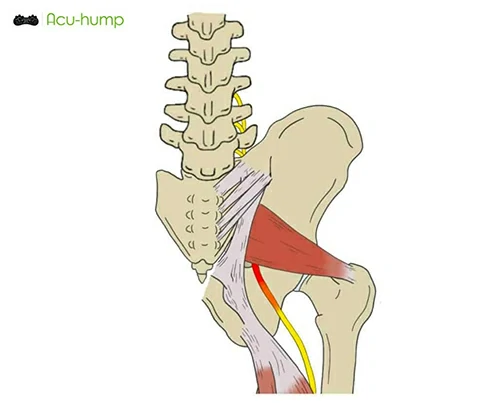
What is the Piriformis Syndrome
Piriformis syndrome occurs when the piriformis muscle, located in the buttocks, becomes inflamed, irritated, or compressed. This can happen due to factors such as trauma, overuse, or anatomical variations.
Where is piriformis pain felt? The condition is characterized by symptoms such as buttock pain, radiating sciatica pain, numbness, tingling, and difficulty walking or sitting for prolonged periods.

Do Muscle Relaxer Helps with Piriformis Syndrome
Why does the piriformis muscle become tight on its own? This is the body’s self-protective mechanism where the surrounding muscles around the root of the problem contract to stabilize, immobilize, and protect it. Once the contraction becomes too tight, there is a chance that lactic acid build-up occurs, leading to pain.
Muscle relaxants are prescription medications designed specifically to promote muscle relaxation. These types of muscle relaxants act on the central nervous system, causing relaxation of all skeletal muscles rather than just instructing the tight muscles to relax.
These medications effectively promote relaxation and can aid patients with piriformis syndrome and buttock sciatic nerve pain. However, they are more like band-aids.
Typically, muscle relaxants are included as part of a comprehensive treatment plan, which may integrate physical therapy, stretching exercises, and lifestyle modifications. By combining these approaches, you can effectively relax the tight piriformis muscles, providing both immediate and long-term relief.
Commonly Prescribed Muscle Relaxers for Piriformis Syndrome
When dealing with the discomfort of piriformis syndrome, healthcare professionals often turn to these muscle relaxers to provide relief.
7 Commonly Prescribed Muscle Relaxers:
- Soma (carisoprodol): It has a high risk of dependency and abuse, which is why some countries prohibit its sale.
- Lorzone (chlorzoxazone)
- Fexmid (cyclobenzaprine)
- Dantrium (dantrolene)
- Skelaxin (metaxalone)
- Robaxin and Robaxin-750 (methocarbamol)
- Zanaflex (tizanidine)
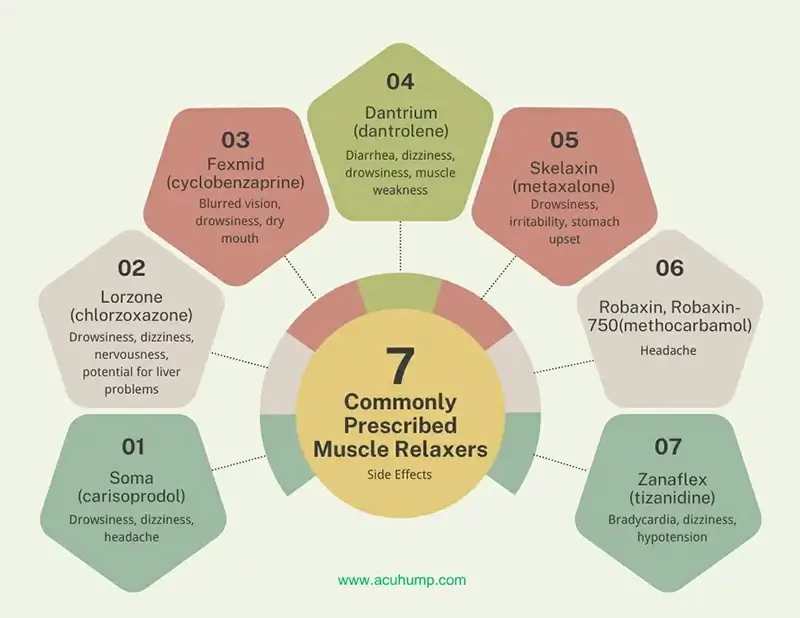
Effectiveness and Side Effects
These medications are designed to target muscle spasms and reduce muscle tension, helping to relax the piriformis and the quadratus lumborum (QL) muscles in the lower back to alleviate pressure on the sciatic nerve.
However, it’s important to note that muscle relaxants may have side effects such as drowsiness, dizziness, or dry mouth. Please refer to the image above where each muscle relaxant is labeled with its respective side effects.
Can muscle relaxants be used to aid sleep?
Some patients use muscle relaxants to induce drowsiness, helping them sleep during episodes of piriformis syndrome and sciatica.
However, this is merely due to the drug’s effect on the central nervous system and does not guarantee high-quality sleep. Therefore, while most muscle relaxants are relatively safe for the stomach, liver, and kidneys, their usage should be minimized whenever possible.
They act on the central nervous system, slowing down nerve transmission to induce relaxation in the body, which may also result in fatigue. They should be used for a period of 2 to 3 weeks at a time. However, it has been observed that 44% of individuals exceed this duration, developing tolerance to the side effects after taking them for over a year.
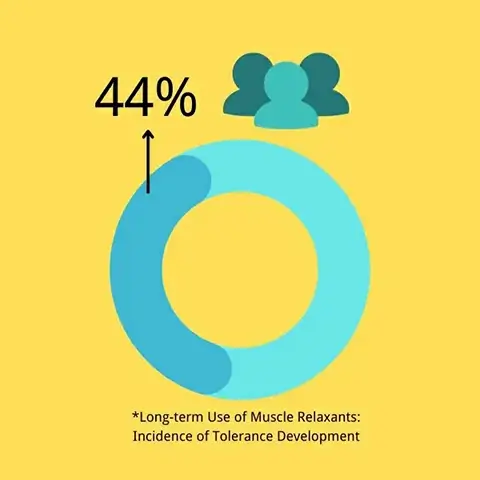
Is There The Best Muscle Relaxer?
The effectiveness of muscle relaxers in treating piriformis syndrome varies from person to person. Therefore, there is no one-size-fits-all “best” muscle relaxer.
Consulting a healthcare professional, such as a primary care doctor or a pain specialist, is crucial in determining the most suitable muscle relaxer for each individual.
To achieve lasting relief, it’s crucial to understand that the effects of muscle relaxers are only temporary.
Instead, taking proactive measures and consistently working towards resolving the condition is the key to making piriformis syndrome go away for good.
How Do I Relax My Piriformis Muscle
Don’t worry, we will provide you with 6 tips to recover the piriformis pain, hip pain, and even alleviate sciatica that radiates into the leg.
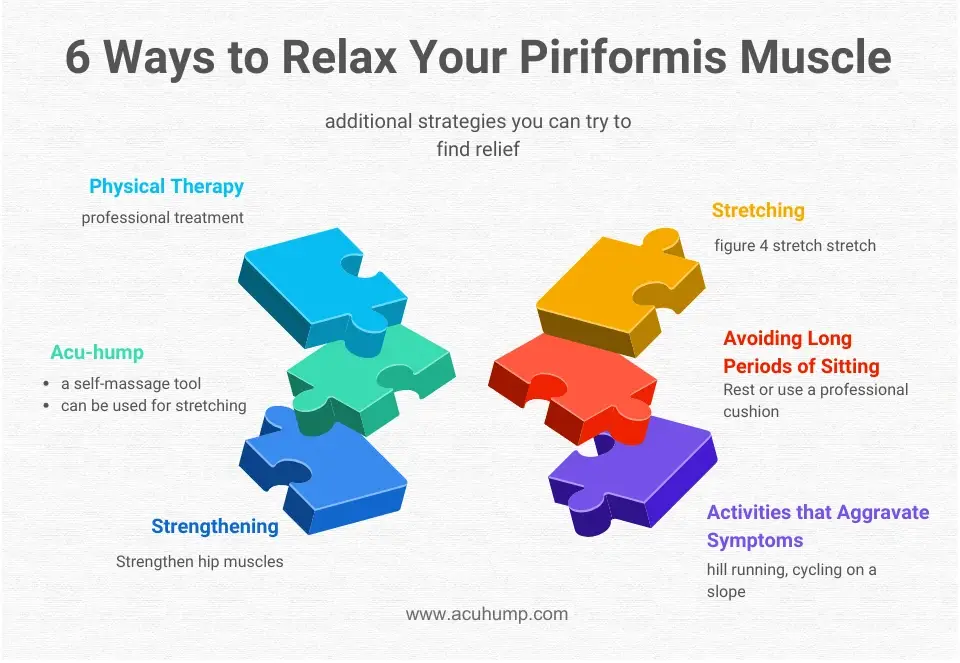
In the treatment process of piriformis syndrome (sciatica in the buttocks), a well-planned approach should include the following 3 points:
- Professional Treatment: Physical therapists typically assist in relaxing the muscles, restoring muscle flexibility, and reducing tension.
- Self-Care: Using Acu-hump at home to self-relax the piriformis muscle can be a great complement to professional treatment.
- Lifestyle Changes: Such as avoiding long periods of sitting and activities (hill running) that aggravate symptoms can support the effectiveness of muscle relaxants in treating piriformis syndrome.
While piriformis syndrome won’t go away overnight, by incorporating these methods, we can take important steps towards relaxing the piriformis muscle.
Acu-hump: the perfect companion for self-care of the piriformis muscle.
Acu-hump is a self-applied pressure method that is widely used to relieve signs of piriformis syndrome. It is effective due to several factors:
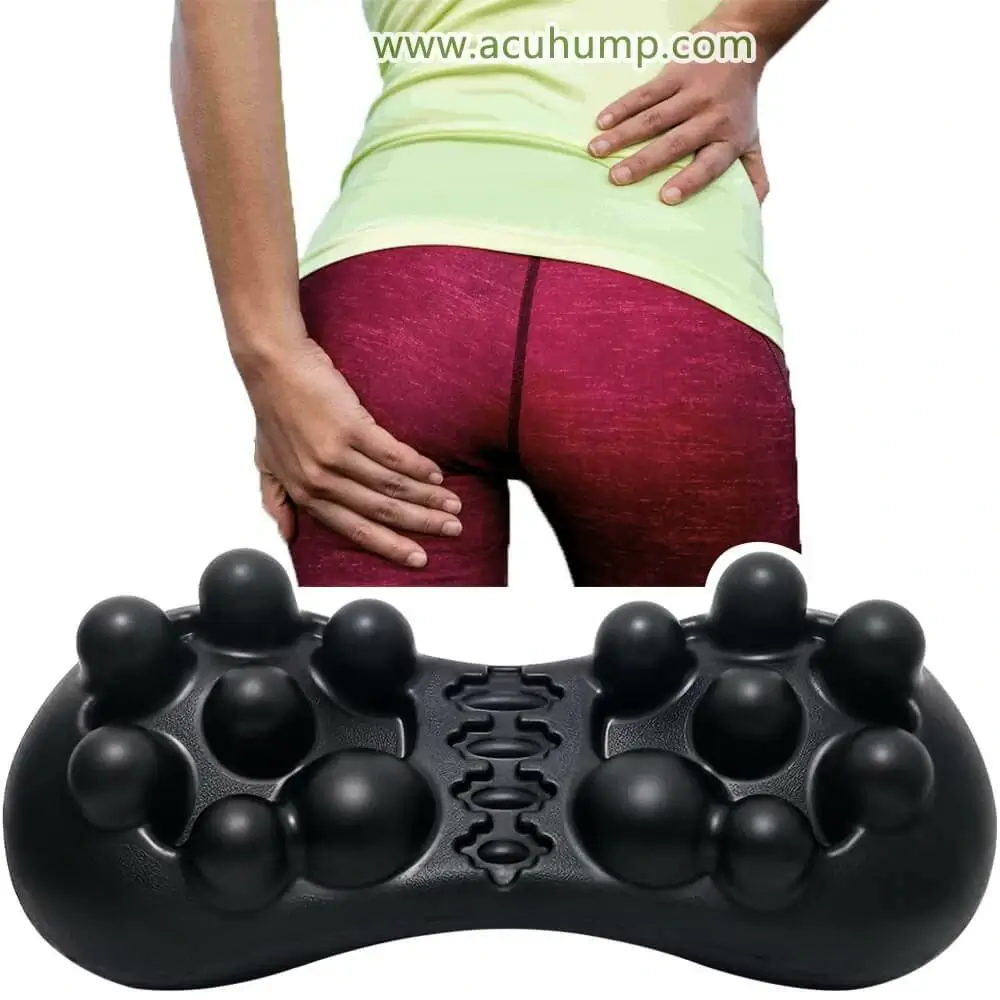
It can be easily used and provide symptom relief at home, in the office, or while traveling.
Acu-hump: 30-day return policy. No risk for you.
Massage
– Releasing Piriformis Trigger Points
The design and shape of Acu-hump allow targeted pressure application on trigger points in the pelvic region, such as the buttock cheeks. Applying moderate pressure can promote muscle relaxation and relieve spasms, reducing tension and pressure on the piriformis muscle.
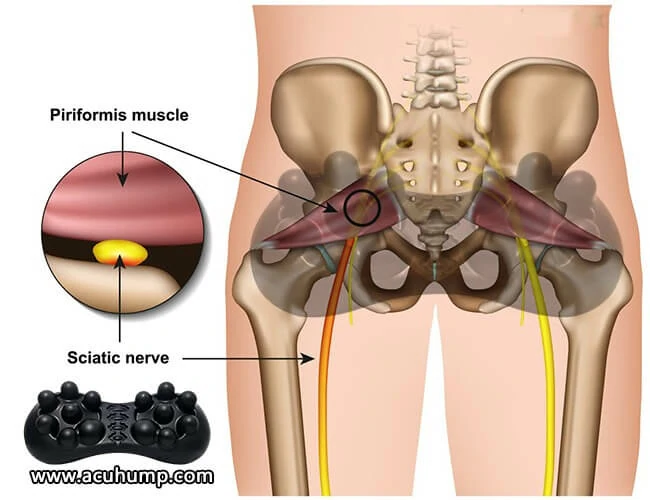
– Activating Blood Circulation
The convex shape and specific pressure points of Acu-hump can increase blood circulation. By enhancing blood flow, this method helps improve oxygen and nutrient supply to muscle tissues, accelerate waste removal, and promote recovery while reducing pain.

It can be easily used and provide symptom relief at home, in the office, or while traveling.
It is important to note that due to individual differences, the sensation of pain during pressure can vary. Typically, the tighter your muscles are, the more noticeable the pain during pressure will be. With increased usage and the gradual release of tense muscles, this sensation of pain will gradually diminish.

Acu-hump: Full refund policy. No risk for you.
Supine Piriformis Stretch
Stretching the piriformis muscle can be done using 3 common methods:
- standing stretch
- seated stretch
- supine stretch
These stretches aim to elongate the tight piriformis muscle by targeting the surrounding hip muscles.
Let’s say you’ve tried one of these stretching methods and nothing works. You try to follow, but the relief is always short-lived.
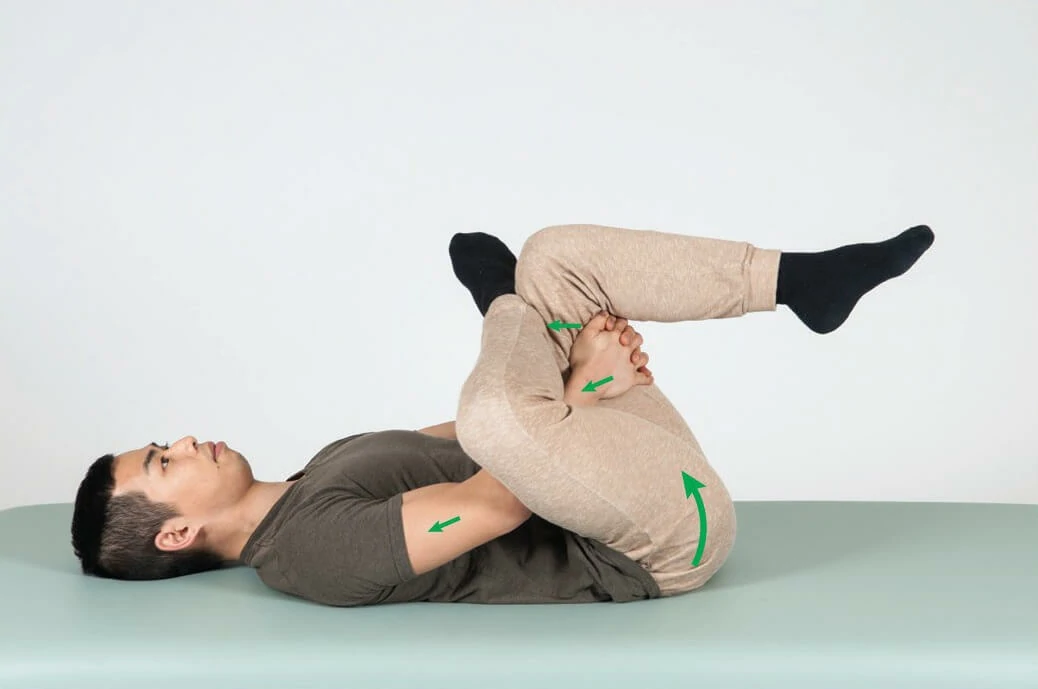
When your hips are tight, have you noticed that your lower back or legs are also compensating for this.
At this point, you may have realized that muscle imbalances can lead to compensatory effects in the piriformis muscle.
Stretching the piriformis muscle alone can be beneficial for individuals with mild symptoms. However, as symptoms worsen, the piriformis muscle tends to quickly return to its tightened state after stretching.
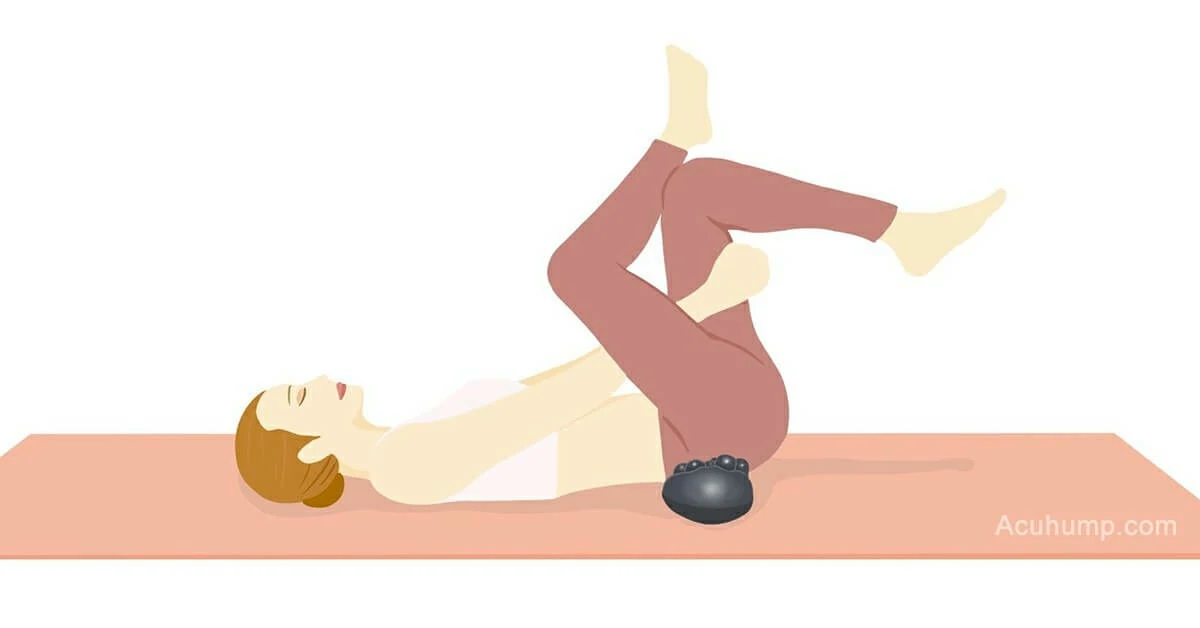
Therefore, a comprehensive stretching routine is crucial. Starting with stretches for the lower back, moving on to piriformis muscles, and ending with hamstring relaxation is recommended.
We have provided the Complete Piriformis Stretching Routine PDF at the end of the article for you to download and save it on your phone.

In this routine, we incorporate the use of Acu-hump as a stretching aid to provide deep pressure during the stretches, enhancing their effectiveness.

Acu-hump: 30-day return policy.
You have no risk.
Strengthening Exercises
After relaxing the piriformis muscle, it is beneficial to incorporate strength training exercises that target the glutes and core muscles within your ability range. This helps improve overall physical fitness and better prepares the body for daily activities.
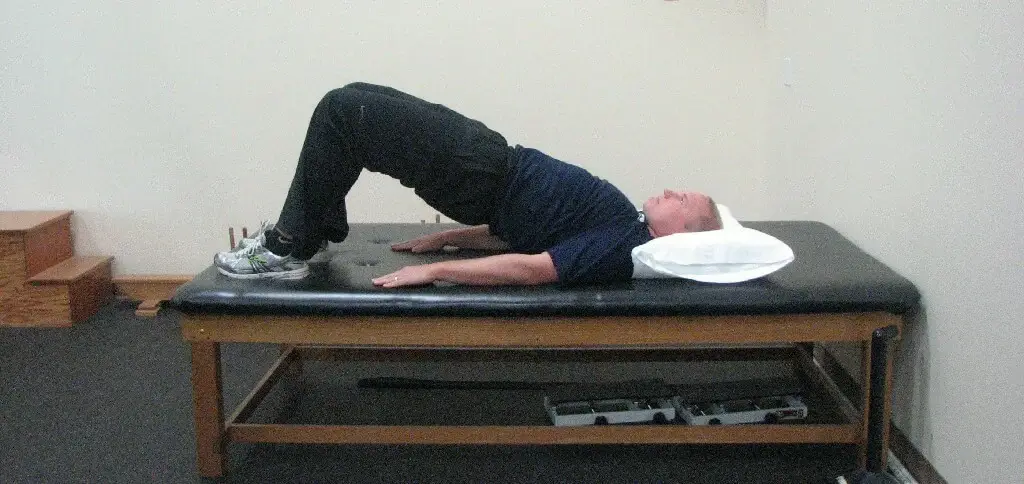
Muscle Relaxers Not Suitable for The Crowd
Piriformis syndrome can cause significant pain and discomfort, impacting your daily activities. Pharmacists advise that muscle relaxants are typically used for 5-7 days, with a maximum duration of 2-3 weeks. Prolonged use, especially in individuals over 65 years of age, is not recommended.
When seeking the assistance of muscle relaxants, it is important to consider potential side effects. These medications will relax your muscles but may also induce fatigue. After taking them, refrain from driving or engaging in strenuous yard work. They are merely a temporary solution, requiring further effort to truly experience comfort while walking the dog, playing with your children, or participating in sporting activities.
You need not endure the pain, nor should you wait too long to attend to the care of the piriformis muscle.
Active rehabilitation is vital for effectively treating piriformis syndrome.
